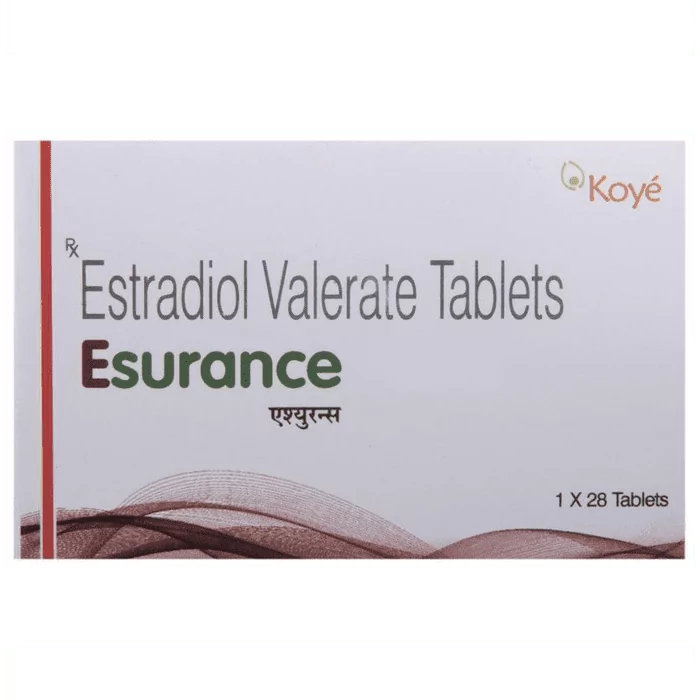Progesterone is an essential hormone for various bodily functions in males and females.
In women, fluctuations in progesterone levels play a crucial role in regulating both fertility and menstruation.
Hence, women who are planning to conceive are often advised to track their Progesterone levels to determine the optimal fertility window.
However, too much shift in Progesterone levels can lead to reduced fertility and increase the chances of early miscarriages.
This is why it is important to stay aware of the varying levels of Progesterone in your body.
This article aims to provide a better understanding of the changes in Progesterone levels after ovulation days end.
Progesterone Levels After Ovulation
The levels of hormones such as Progesterone constantly vary among women depending on the phase of their menstrual cycle.
Progesterone levels remain relatively low in women during the first half of the cycle, known as the follicular phase.
However, after ovulation occurs, significant variation is observed in these hormones.
These variations may result in ovulation pain, cramps, or bloating for some women.
Let us discuss these changes in Progesterone levels post-ovulation in detail.
Save up to 90% on your medicine bills

Progynova 2 mg

Oestrogel 2.5 gm / 1.5 mg

Estrabet 2 Tablet

Esurance Tablet
Progesterone Levels After Ovulation Day by Day
The levels of Progesterone may fluctuate almost everyday after ovulation.
Let’s delve into these changes day by day, exploring them in depth below.
Day 1-6 Post Ovulation:
Progesterone levels typically increase immediately after ovulation.
This happens because the luteinizing hormones turn the mature follicle into a corpus luteum that produces Progesterone.
This phase of the menstrual cycle is known as the luteal phase.
At this stage, Progesterone levels in your bloodstream are around 2-25 ng/ml on average.
Day 7-10 Post Ovulation:
Roughly a week after ovulation, Progesterone levels peak and may stay steady for a period.
This ensures the uterine lining remains stable, crucial for successful implantation of the fertilized egg.
Studies reveal that elevated levels of Progesterone during this phase are linked with better pregnancy rates.
Therefore, this is the ideal stage of implantation for a healthy pregnancy, as later implantations increase the risk of complications.
Day 11-14 After Ovulation:
About two weeks after ovulation, if implantation occurs, Progesterone levels continue to rise to support the pregnancy.
Therefore, high levels of Progesterone in your bloodstream post-ovulation can be an indication of pregnancy. You can test these hormone levels at home using various Ovulation test kits.
However, if there is no implantation or fertilization, the Progesterone levels begin to fall rapidly.
This decline results in numerous PMS symptoms, such as Nausea and mood swings as periods approach.
Progesterone Level Chart After Ovulation
| Day Count | Progesterone level (ng/ml) |
|---|---|
| Before Ovulation | 0.1-0.7 ng/ml |
| Day 1-6 Post Ovulation | 2-25 ng/ml |
| Day 7-10 Post Ovulation | 5-25 ng/ml |
| Day 11-14 Post Ovulation | 10 to 44 ng/mL; if pregnant 0.1-3 ng/ml; if not pregnant |
Risks of Low Progesterone After Ovulation
The drop in Progesterone is essential to support menstruation in women.
However, if you experience a significant drop in your Progesterone, it can lead to early onset of periods or infertility.
Additionally, a drop in Progesterone levels too soon after ovulation can increase the chances of miscarriages.
Monitoring your ovulation after a miscarriage can be a harder task for some individuals.
Furthermore, low Progesterone is also linked with uncomfortable symptoms such as fatigue and mood swings.
Therefore, it is important to get tested and seek proper treatment for low Progesterone levels, especially if you are trying to get pregnant after ovulation.
After diagnosis, your doctor may suggest Progesterone pills and tablets to restore the hormonal imbalance.
Hormone Replacement Therapy (HRT) with Estrogen and Progesterone may also be prescribed in certain severe cases.
Conclusion
Progesterone is a hormone that helps regulate menstrual cycles in women. It also supports healthy pregnancy in females.
Women who are trying to conceive may wish to track their Progesterone levels after ovulation. This can help maximize conception chances.
A few days after ovulation, Progesterone levels rise as the mature follicle turns into a corpus luteum.
About a week after ovulation, the levels of Progesterone remain steady. This allows for proper implantation of the fertilized egg.
If the implantation occurs, this level rises higher to sustain the pregnancy.
If there is no implantation, Progesterone levels decline rapidly, resulting in menstruation.
It is important to note that excessive or early decline in Progesterone levels can heighten the risks of miscarriages and failed implantation.
Therefore, it is essential to get proper medical care from a certified doctor if you detect low Progesterone levels after ovulation.

Frequently Asked Questions
When to test progesterone levels after ovulation?
Progesterone levels are typically tested 7 days after ovulation when they peak in a natural menstrual cycle.
This ensures accurate testing for a potential pregnancy. Buy Now
How high should Progesterone be after ovulation?
Progesterone levels can be as high as 25 ng/ml immediately after ovulation.
This increase is crucial for preparing the uterine lining for a possible pregnancy and supporting early embryo development. Buy Now
What should progesterone levels be for implantation?
Generally, progesterone levels should be above 10 ng/mL for the embryo to be implanted successfully.
However, this estimation varies for different women depending on several medical factors. Buy Now
When does Progesterone drop after ovulation?
Progesterone levels typically start declining about a week before menstruation, roughly 7 to 9 days after ovulation.
This decline triggers the shedding of the uterine lining if pregnancy has not occurred. Buy Now
Can a Progesterone test detect pregnancy?
Yes, progesterone tests can help detect pregnancy indirectly.
Elevated progesterone levels after ovulation can indicate pregnancy, signaling the development of the uterine wall. Buy Now
Cheap Medicine Shop only refers to credible, authoritative sources for our content. If you’re curious about how we ensure the integrity of our content, we encourage you to read our Content Information Policy.














